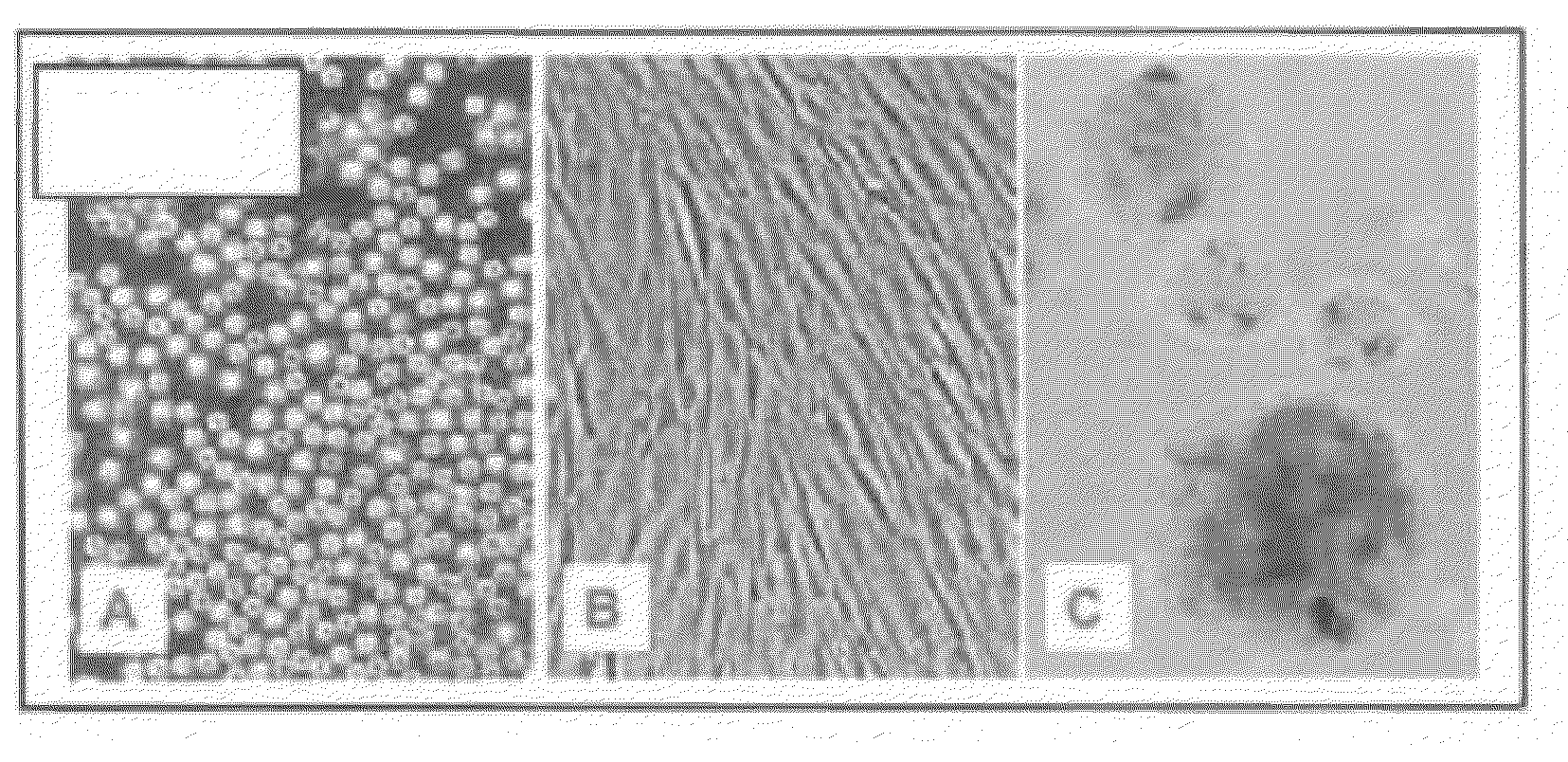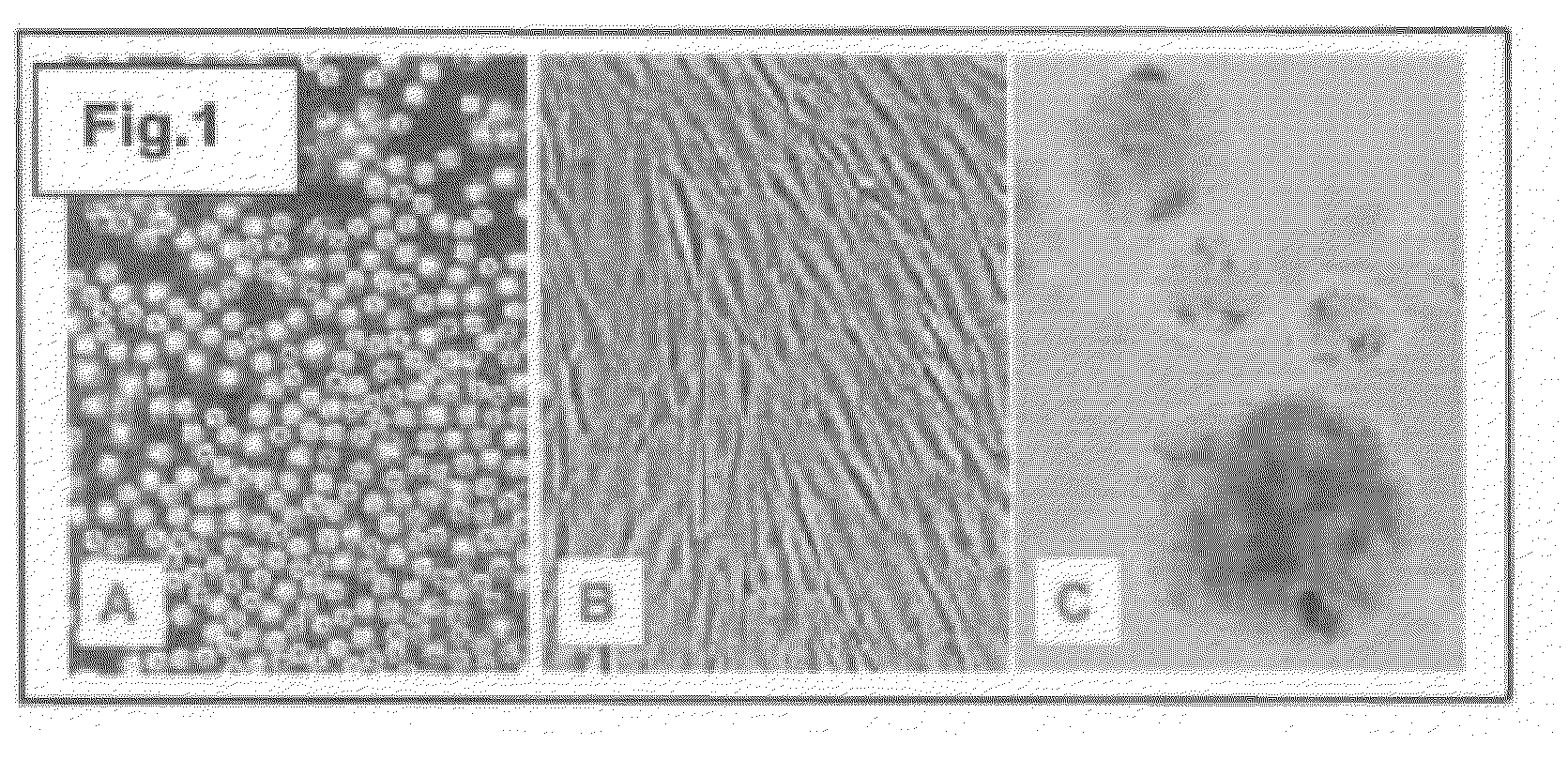Methods for the generation of cartilage-like material by mechanical loading
a technology of cartilage-like material and mechanical loading, which is applied in the direction of biocide, instruments, skeletal/connective tissue cells, etc., can solve the problems of minimal expression or undetectable levels of cartilage-like biomaterial, and achieve the effects of increasing the biocompatibility of cartilage replacement, enhancing or promoting chondrogenesis or osteogenesis
- Summary
- Abstract
- Description
- Claims
- Application Information
AI Technical Summary
Benefits of technology
Problems solved by technology
Method used
Image
Examples
specific example 1
on CTEs
[0108]In this example, specimens were exposed to hydrostatic pressure and compared with culture-time-matched unloaded control specimens. Using the suspension culture method according to principles of the invention, primary chondrocyte CTEs were developed without the addition of scaffold or foreign material is demonstrated. Moreover, the resultant CTEs resembled normal cartilage and responded to physiologically relevant hydrostatic load by significantly increasing expression of cartilage molecules.
Cartilage Source
[0109]Femoral head, condyle epiphyseal, and articular cartilage were removed under sterile conditions from neonatal Yorkshire pigs within 2 hours of death. They were obtained from a commercial breeding farm at the New Bolton Center in Kennett Square, Pa. The Institutional Animal Care and Use Committee (IACUC) reviewed the procedure and exempted it from full IACUC review, since the tissue was discarded from a commercial supplier of animals for consumption.
Chondrocyte I...
specific example 3
udies on Mesenchymal Stem Cells Prior to Load
[0137]This example examined the effects of preconditioning the MSCs in CM prior to load. During the preconditioning period the cells slowly accumulated ECM responded more favorably to load, as shown in FIG. 15. As seen in FIG. 15, aggrecan expression increased in response to loading after three weeks of preconditioning in CM.
[0138]With each week of preconditioning samples became more densely packed and appeared more organized FIG. 16. There was also an overall increase in uniformity across the biomass with each week of culture in CM. Uniformity was seen as similar cell arrangements and consistent spacing between individual cells (composed of matrix). The gaps that were seen in sections were not artifacts of the sectioning procedure, however, they were seen throughout the many different sections. These gaps in the matrix were likely the result of the shorter culture time and the CTE producing less ECM components. The gaps present at 1 week...
specific example 4
ing of CTEs
[0141]Biomechanical tests on CTEs using a uniaxial confined compression stress-relaxation protocol were performed. Material properties were calculated using theory based on the experimental protocol from the literature. Cultured tissue equivalents were taken immediately from their culture environment for testing. The mechanical tests were performed using a materials testing machine (Instron Corp., Canton, Me.). Each specimen was placed in a confined compression chamber and submerged in a bath filled with phosphate buffer solution.
[0142]Samples were allowed 15 minutes to reach equilibrium under an initial tare load of 0.0854 N. Five 7.5% compressive stain increments were then applied at a rate of 2.5 N / m-s with the displacement was held constant for 1400 seconds between them. Cartilage mechanical properties were described using linear, biphasic theory. The aggregate modulus and the hydraulic permeability were solved.
[0143]Seventeen five mm diameter specimens were tested fr...
PUM
 Login to View More
Login to View More Abstract
Description
Claims
Application Information
 Login to View More
Login to View More - R&D
- Intellectual Property
- Life Sciences
- Materials
- Tech Scout
- Unparalleled Data Quality
- Higher Quality Content
- 60% Fewer Hallucinations
Browse by: Latest US Patents, China's latest patents, Technical Efficacy Thesaurus, Application Domain, Technology Topic, Popular Technical Reports.
© 2025 PatSnap. All rights reserved.Legal|Privacy policy|Modern Slavery Act Transparency Statement|Sitemap|About US| Contact US: help@patsnap.com



